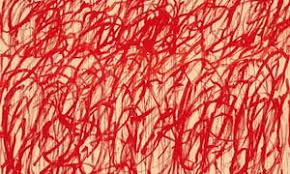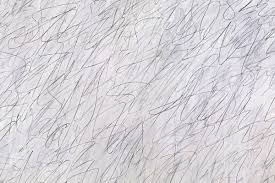Oscillating Objects/Thixotropy
It all started with Thixotropy and ended in Obesity and death
Produced by: James Tregaskis
Introduction
Theme: Thixotropy
The Wikipedia definition:
Thixotropy is a time-dependent shear thinning property. Certain gels or fluids that are thick, or viscous, under static conditions will flow (become thin, less viscous) over time when shaken, agitated, sheared or otherwise stressed (time dependent viscosity). They then take a fixed time to return to a more viscous state. In other words: some non-Newtonian pseudoplastic fluids show a time-dependent change in viscosity; the longer the fluid undergoes shear stress, the lower its viscosity. A thixotropic fluid is a fluid which takes a finite time to attain equilibrium viscosity when introduced to a steep change in shear rate. Some thixotropic fluids return to a gel state almost instantly, such as ketchup, and are called pseudoplastic fluids. Others such as yogurt take much longer and can become nearly solid. Many gels and colloids are thixotropic materials, exhibiting a stable form at rest but becoming fluid when agitated.
I painted a six foot by six foot canvas in 1992 in oils:
This inspired me to progress with this in Processing. My attempts to deliver this as a prototype failed, however, this was useful in so far as I had experimented with the idea. It just did not work for me in the period we had to submit the prototype. I however did deliver an unplanned but interesting sequence. I used 2 classes to hold a (perlin noise ‘tube’ of segments) – this eventually became something ‘else’. The sequence was self-limiting as I did not properly clear the segments from memory and as it stood, needed re-working.
I then decided to start again. And again…
On starting a fresh animation, I wanted to use classes to produce a stable animation with good control of colour, not the wildly fluctuating colour sketches I had delivered during the term’s assignments. The theme of thixotropy perhaps is now put to one side – however, I was happier with a sketch that worked for me, being more pleasing to my eye rather than the original effort.
Concept and background research
I had in my mind initially to animate a previous work of mine, this painted in oils over 36 square feet, I orginated this in a pencil sketch and painted it from 1992-1994. I sunsequently saw works by Cy Twombly which seemed to resonate with me, but to be honest, I have not seen anything quite like this anywhere else. However, the translation into Processing was problematic, although, a visit to openprocessing.org revealed a few sketeches that acheieved something like what I was aiming at. The submission of a prototype at the end of term, as seen in my video shows how things ended up.
I decided to start again, using slowness and gradual change as my revised aim. This was to create independent groups of objects, changing and dying off, as oscillating groups of shapes.
The oscillating groups derive from my initial idea of a class which evolves slowly, dies off and re-appears, from the initial sketch. Although very different, it uses a containing class to hold the oscillating objects, each group changing position, colour and the constituent ellipses in each group progressively getting fatter and dying off. New groups appear in fresh colours. I used Perlin noise to move and colour the objects, restricting colour changes and using HSB colour more to achieve this.
Technical
IAlthough very different, it uses a containing class to hold the oscillating objects, each group changing position, colour and the constituent ellipses in each group progressively getting fatter and dying off. New groups appear in fresh colours. I used Perlin noise to move and colour the objects, restricting colour changes and using HSB colour more to achieve this.
Future development
My intention is to re-visit the initial ‘toothpaste’ concept and produce a new sketch demonstrating my original concept. I would like to colour the emerging shapes as well.
References
Daniel Schiffman http://natureofcode.com


































































